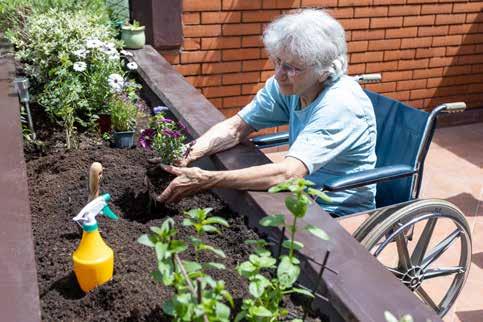
1 minute read
Accessible Gardening
By April Hensley
May has arrived and I’m relieved its finally time to begin planting warm weather vegetables and flowers outdoors. Winter felt especially long and cold this year. My husband and I have both begun to experience a few twinges of arthritis. The cold months found me huddled closer to the fireplace more than on exciting snowy adventures of years past.
The aching joints have made me think about the distant future of the garden and outdoor living spaces. Gardening is loved by all ages and activity levels. People shouldn’t have to give up something beneficial because of age, disabilities, or limitations. Gardens give us much more than food and flowers. Besides the love of nature and the outdoors, working with our hands in the soil is stress relieving. Vitamin D from the sun is great for health and moods. Gardening is even considered a healthy exercise.
Just like our homes, we can customize our gardens and outdoor living spaces to make them more accessible.
• Plan your outdoor activities in level or gradually sloping areas.
• Handrails are helpful when placed along steps, pathways, and areas that could be slippery like outbuilding ramps and terraced gardens.
• Ensure that your door and gate openings and pathways are at least 36 inches wide to make using a wheelchair more navigable. Spacious pathways make it nice to walk beside each other for talking and visiting.
• Pathway materials should be sturdy for those with mobility issues using canes and walkers. Concrete and asphalt stay smooth but also level bricks and pavers give a good solid surface.
• Install water hydrants close to garden areas so it is not necessary to drag heavy garden hoses across long areas.
• Place benches and chairs for those times when a little rest is needed with a few in a shady area.
• Install pots that hook over or bolt onto porch and deck railing.
• Use nets and trellises to grow vining plants up to prevent bending.
• Hanging baskets can be used for growing vegetables and flowers.
• Regular height raised beds of around ten inches tall can have a flat board around the top to sit while weeding.
• Tall raised beds over two feet tall prevent bending at all and the extra depth is great for growing deep rooted beefsteak tomato plants and root vegetables like potatoes.
• Raised beds on legs can be built or bought that are wheelchair height or standing height.







